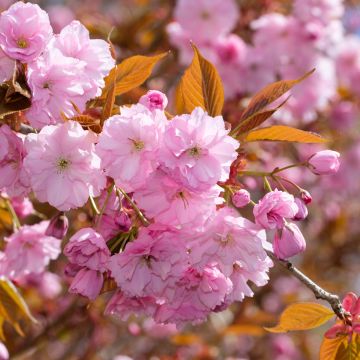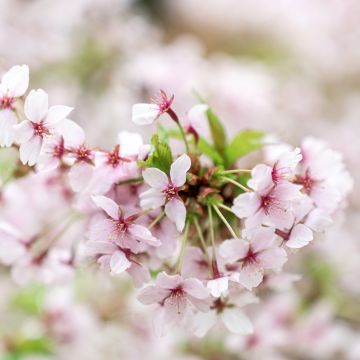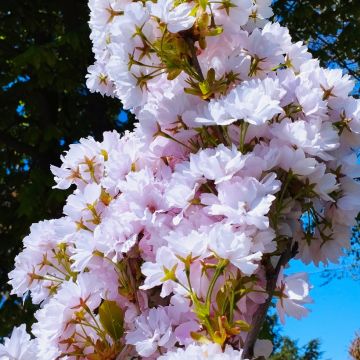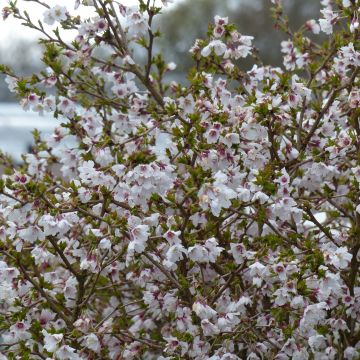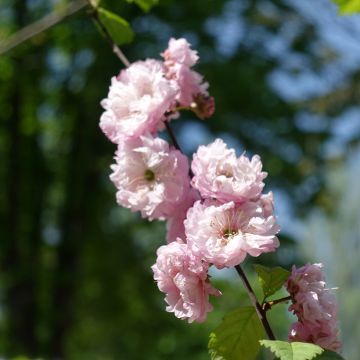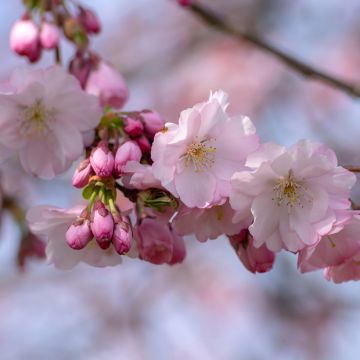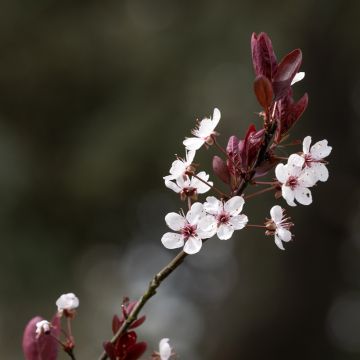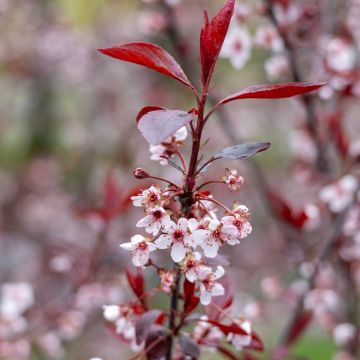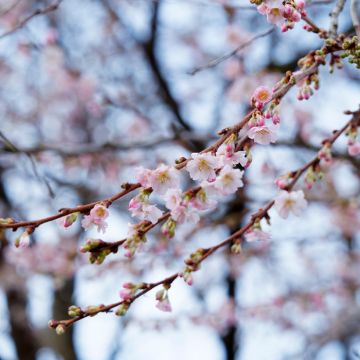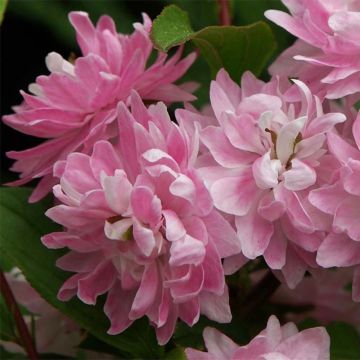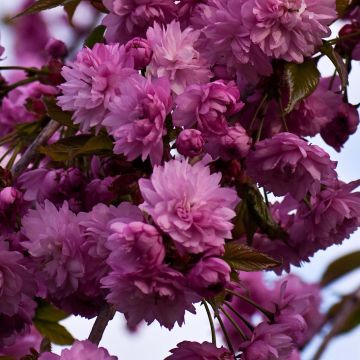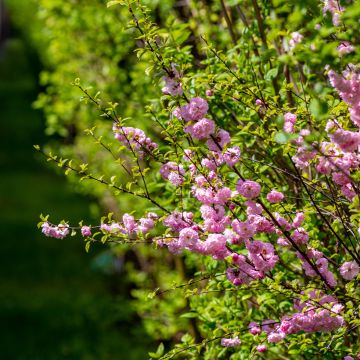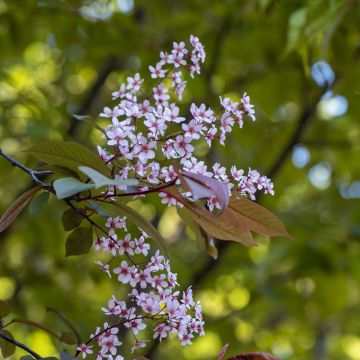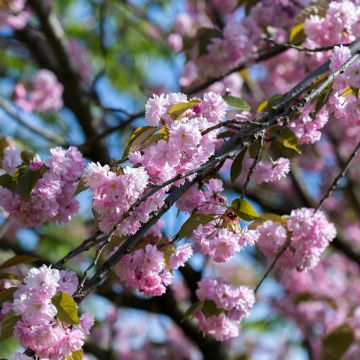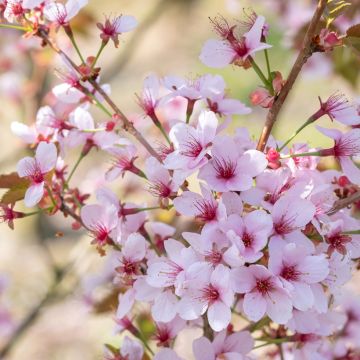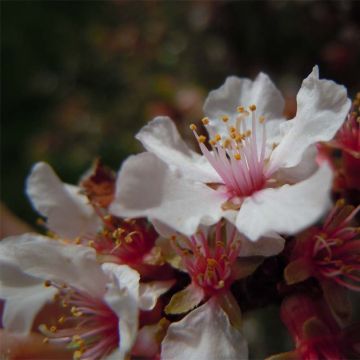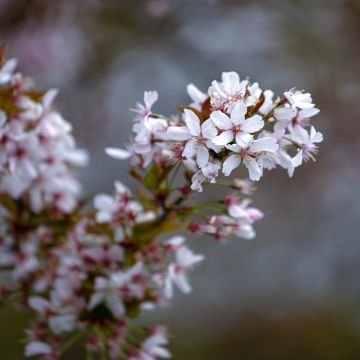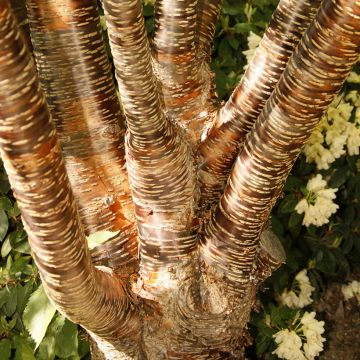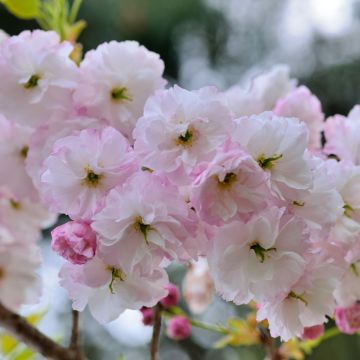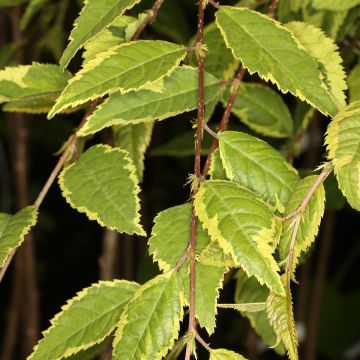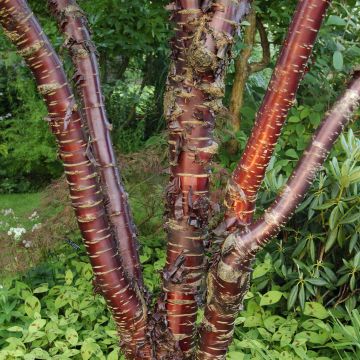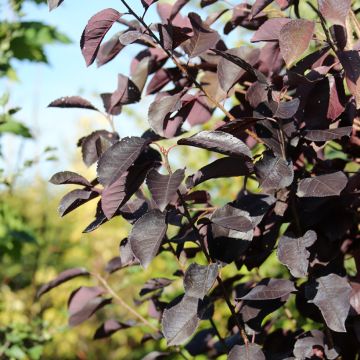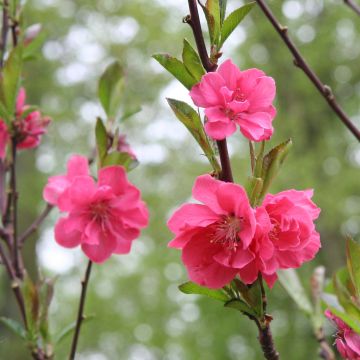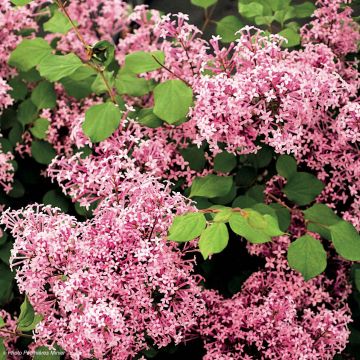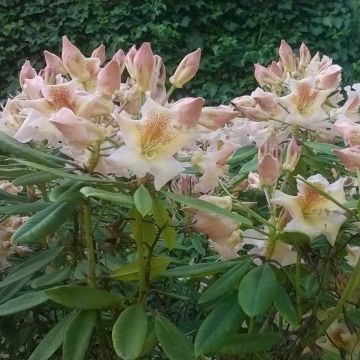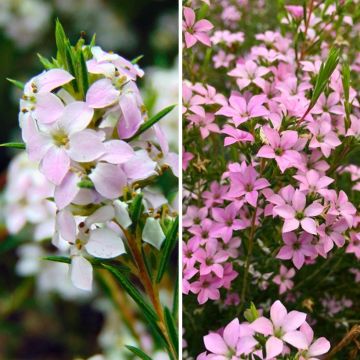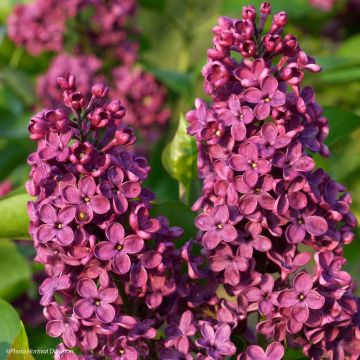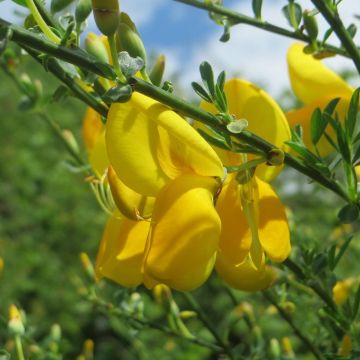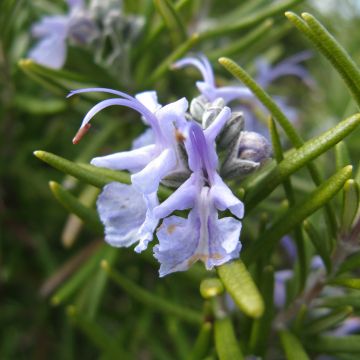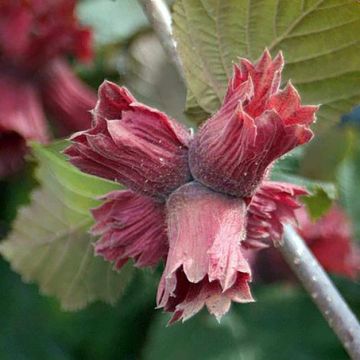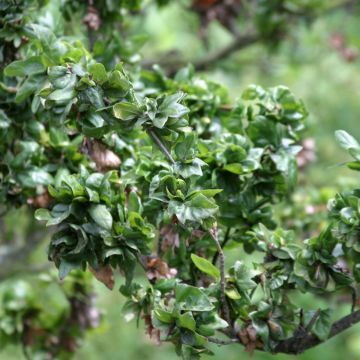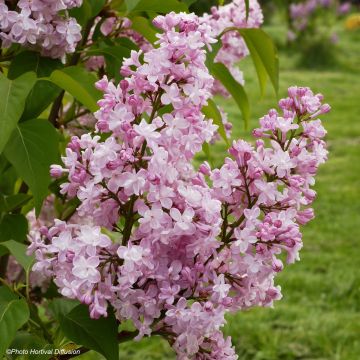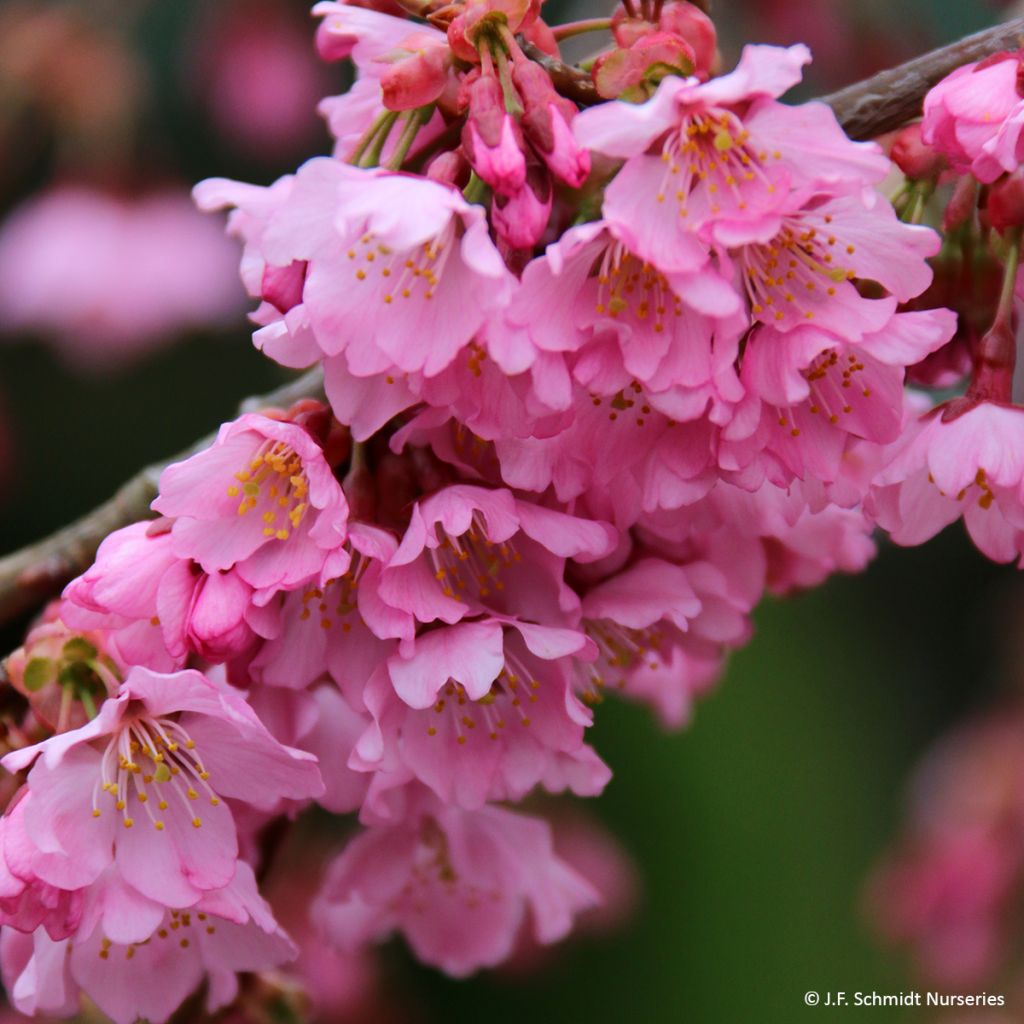

Prunus Pink Cascade - Cherry Tree
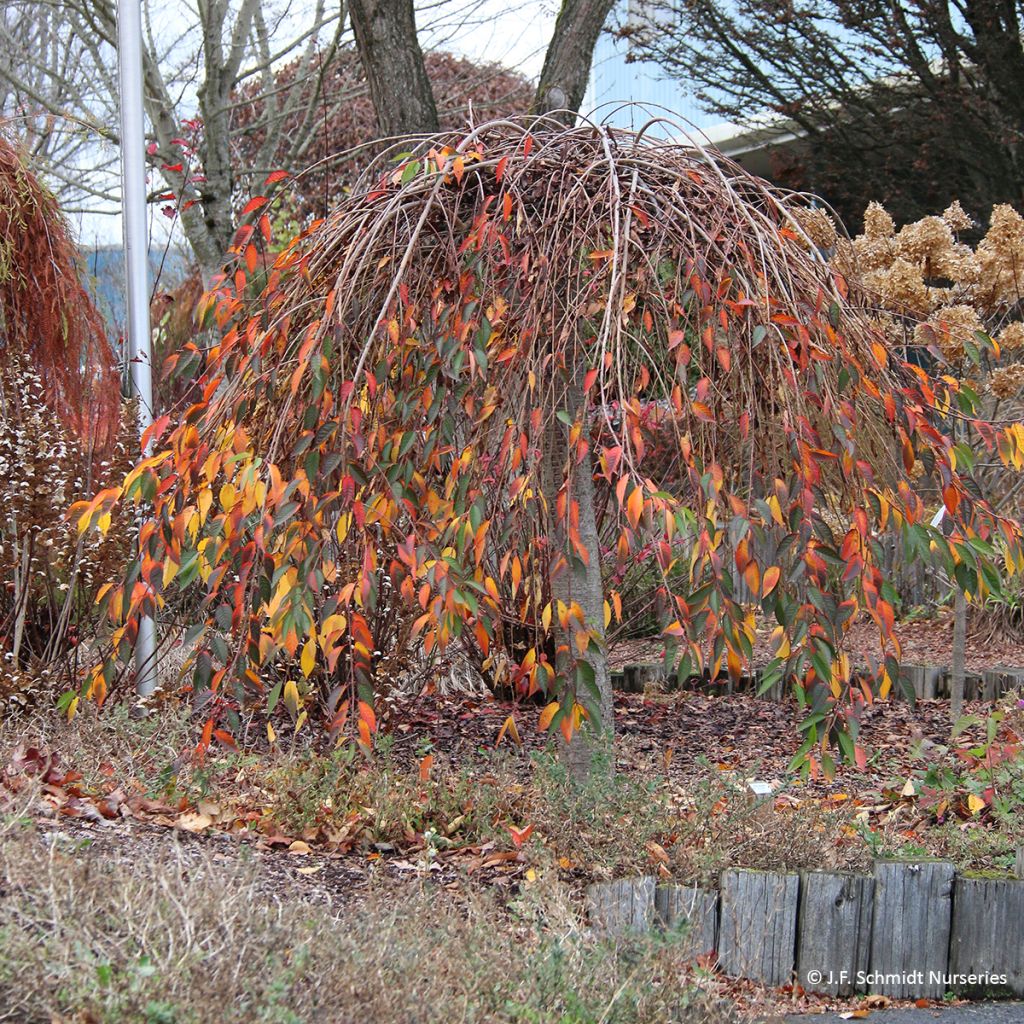

Prunus Pink Cascade - Cherry Tree
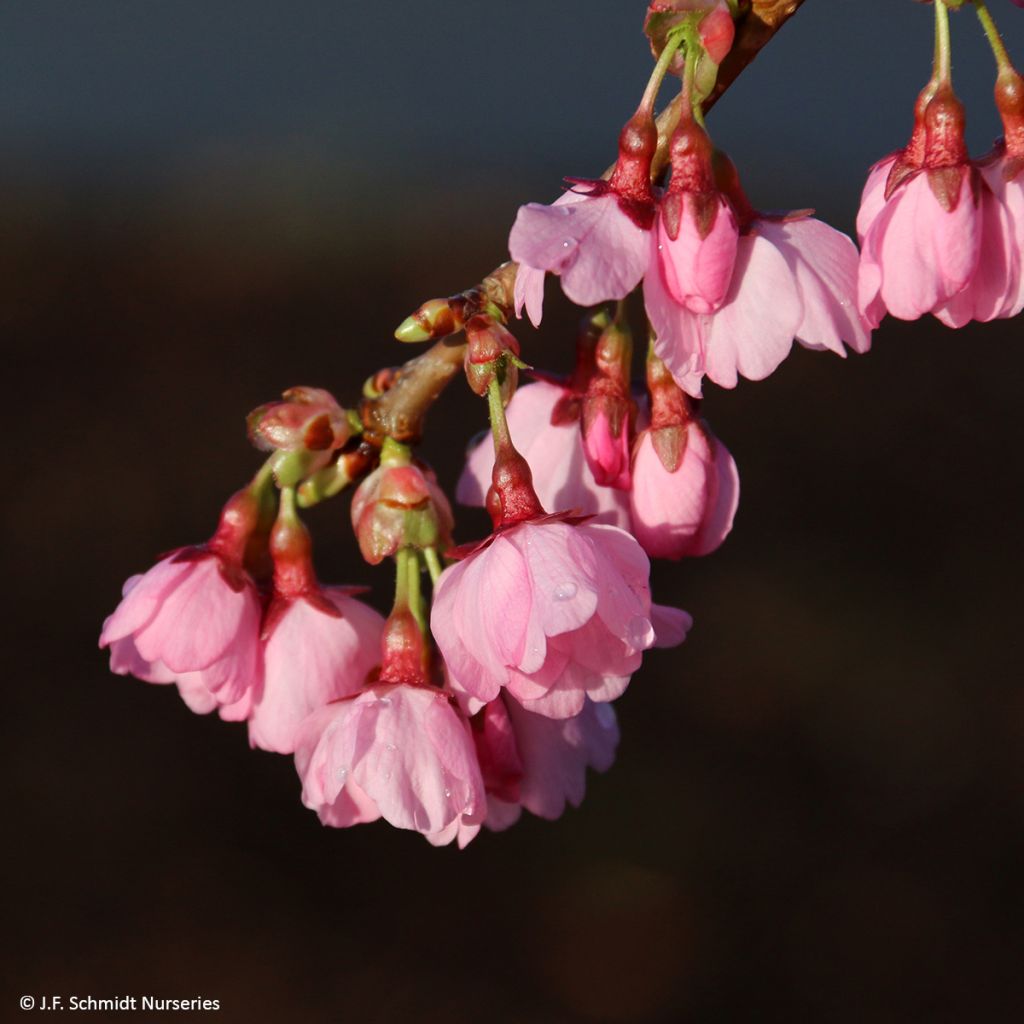

Prunus Pink Cascade - Cherry Tree
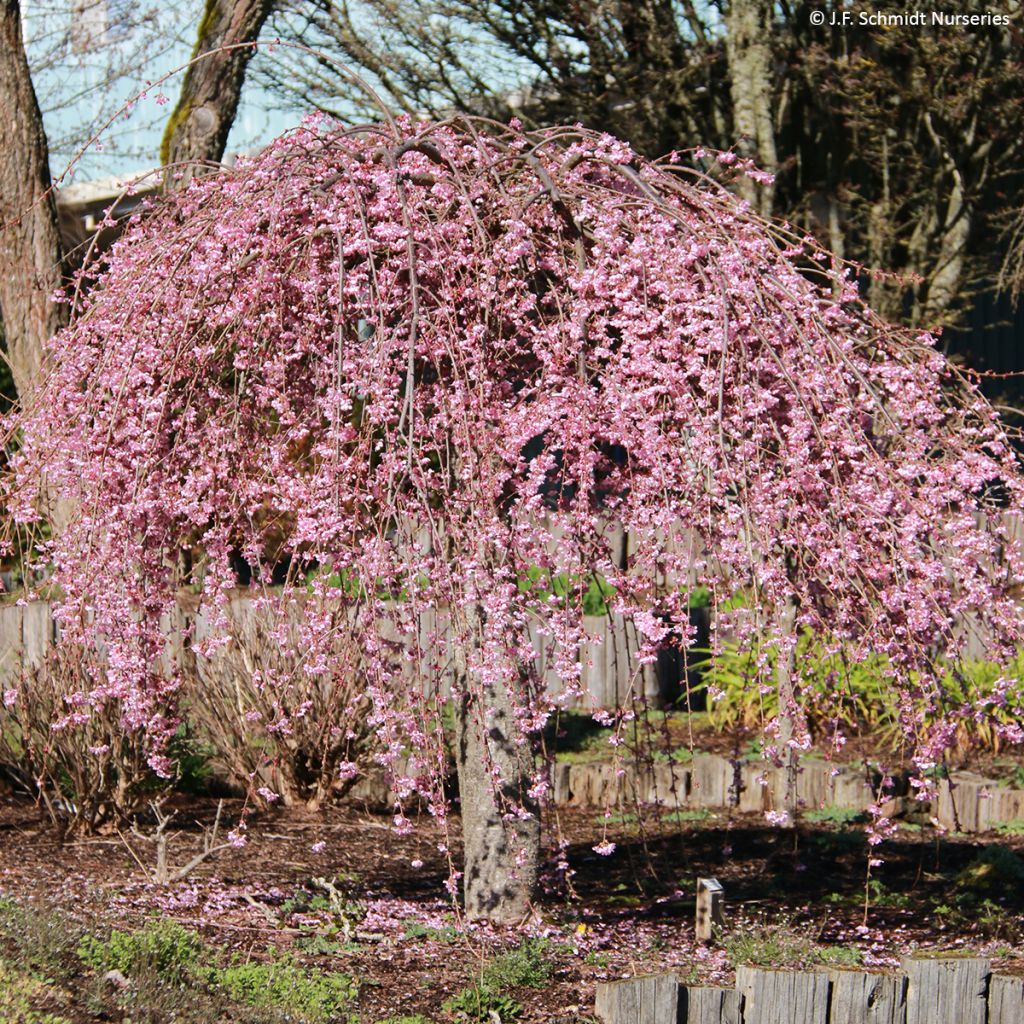

Prunus Pink Cascade - Cherry Tree
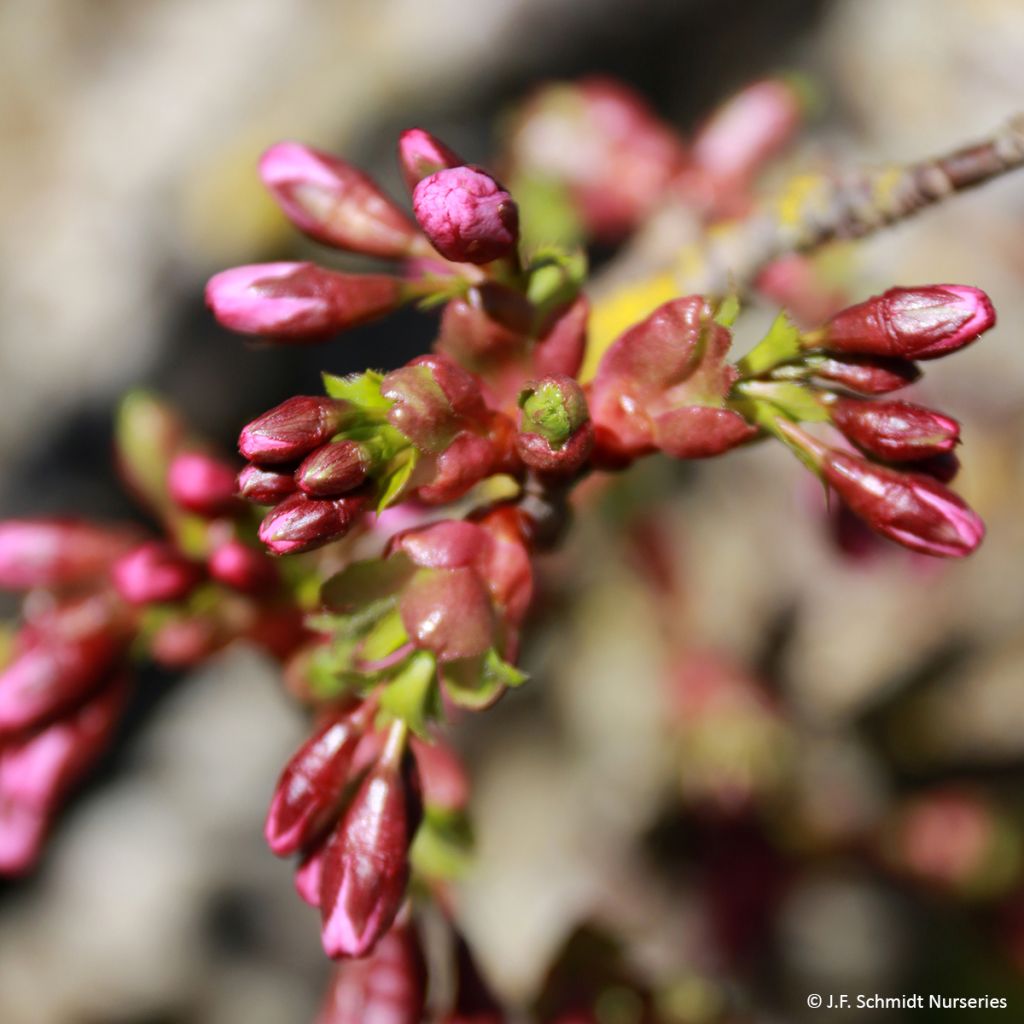

Prunus Pink Cascade - Cherry Tree
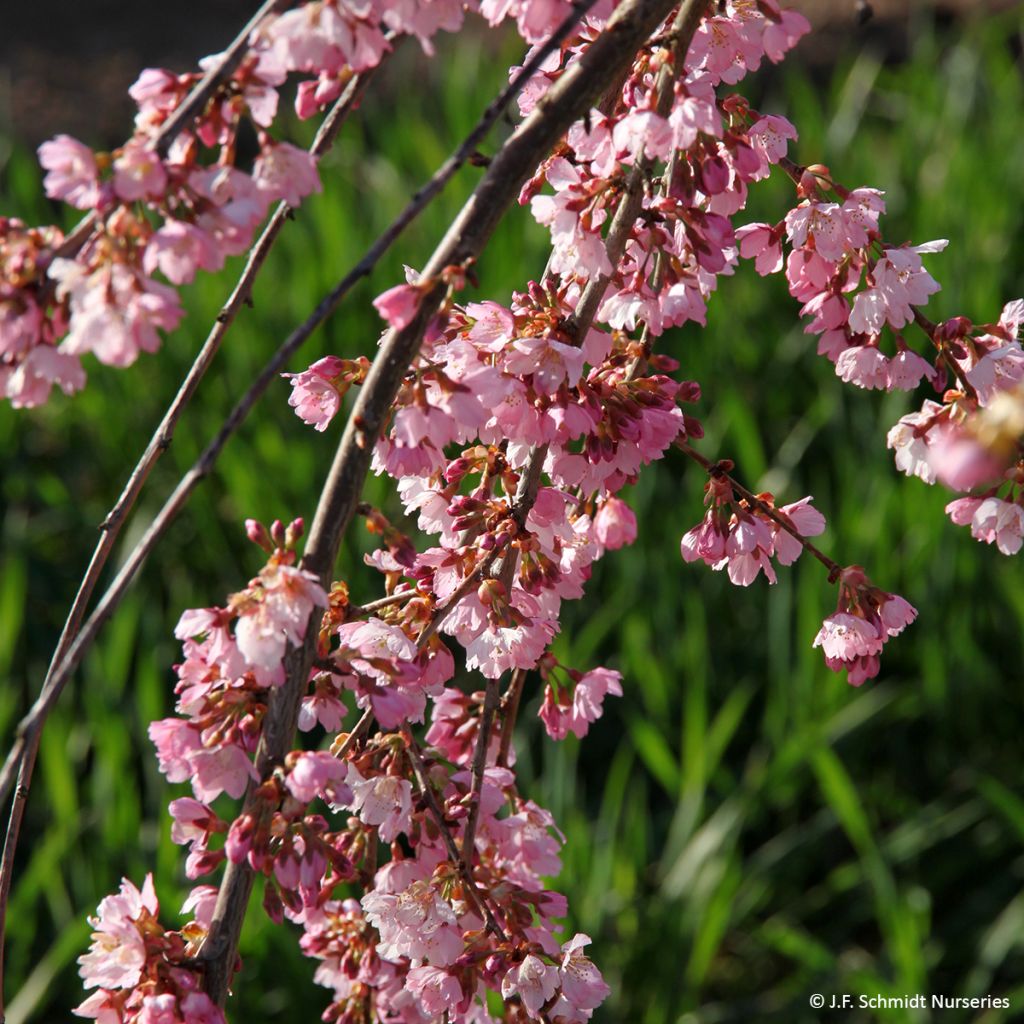

Prunus Pink Cascade - Cherry Tree
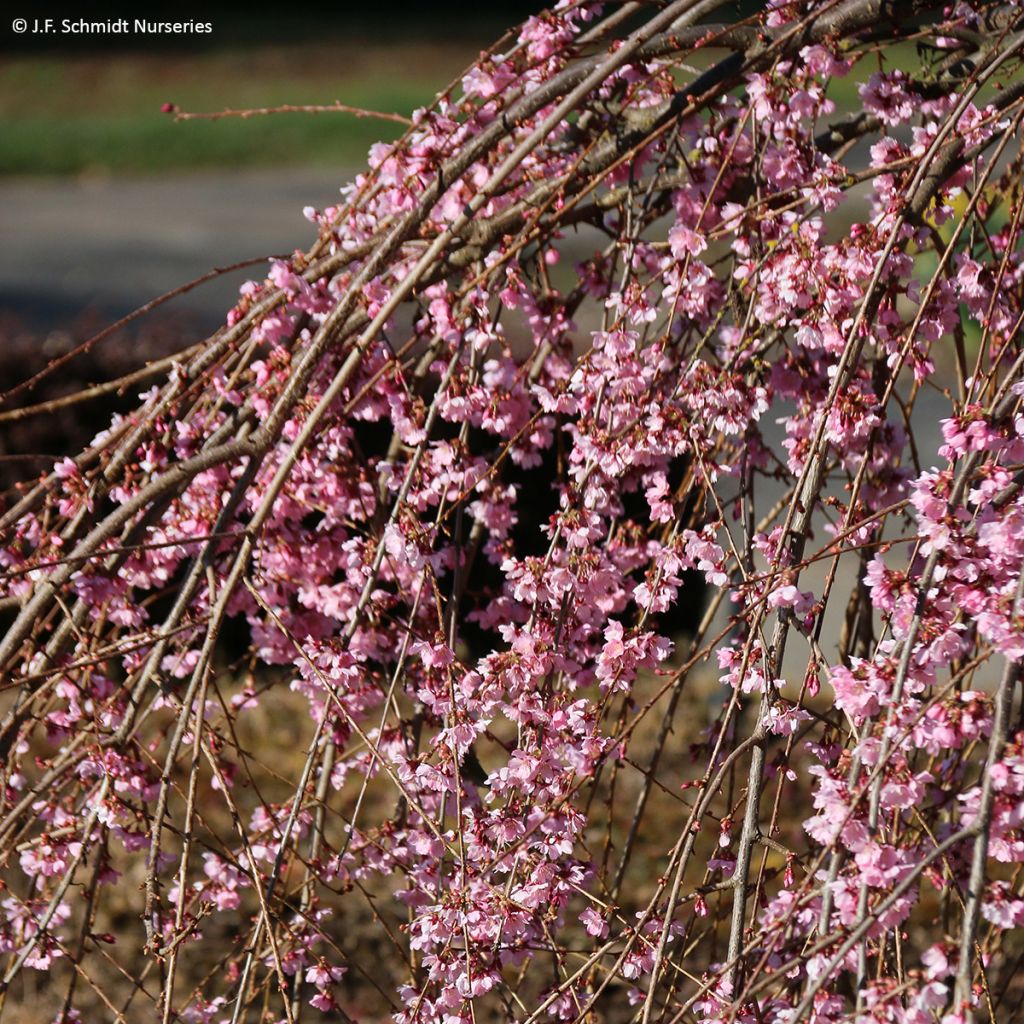

Prunus Pink Cascade - Cherry Tree
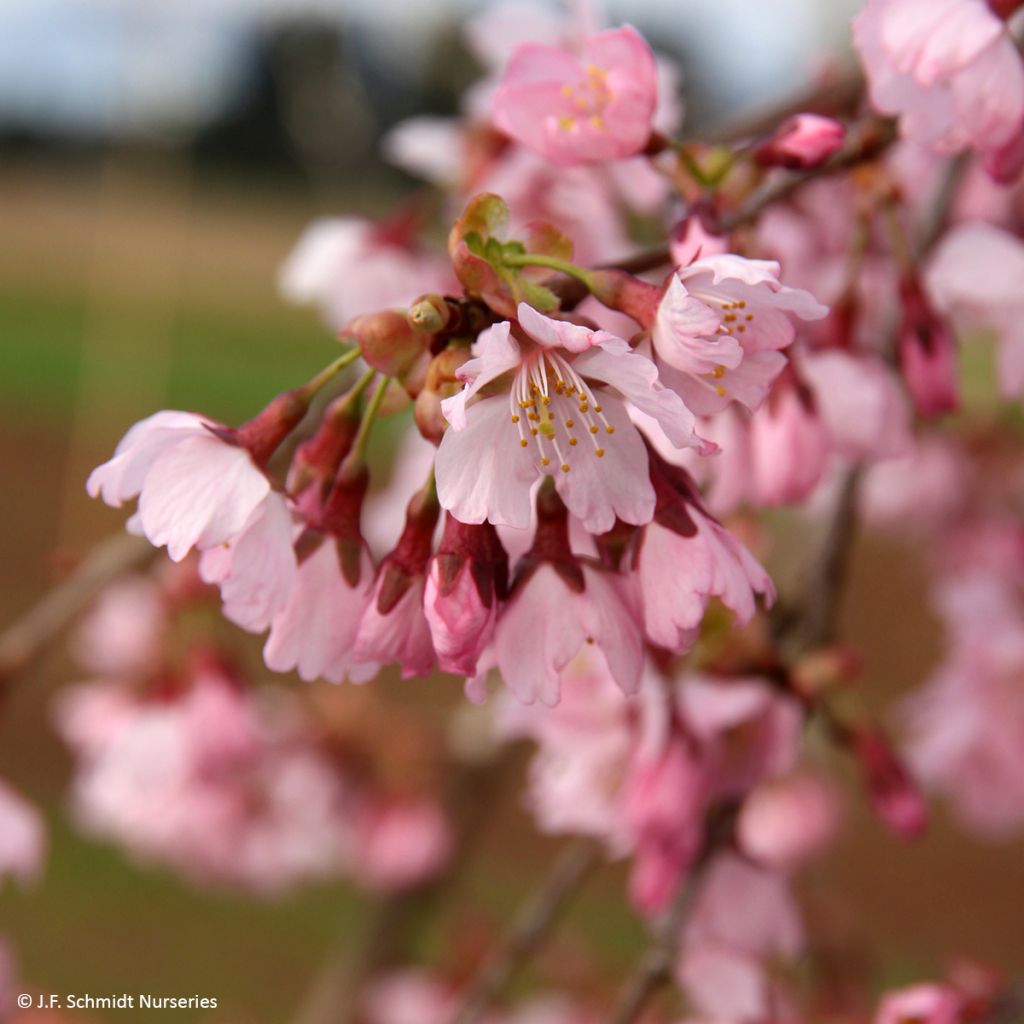

Prunus Pink Cascade - Cherry Tree
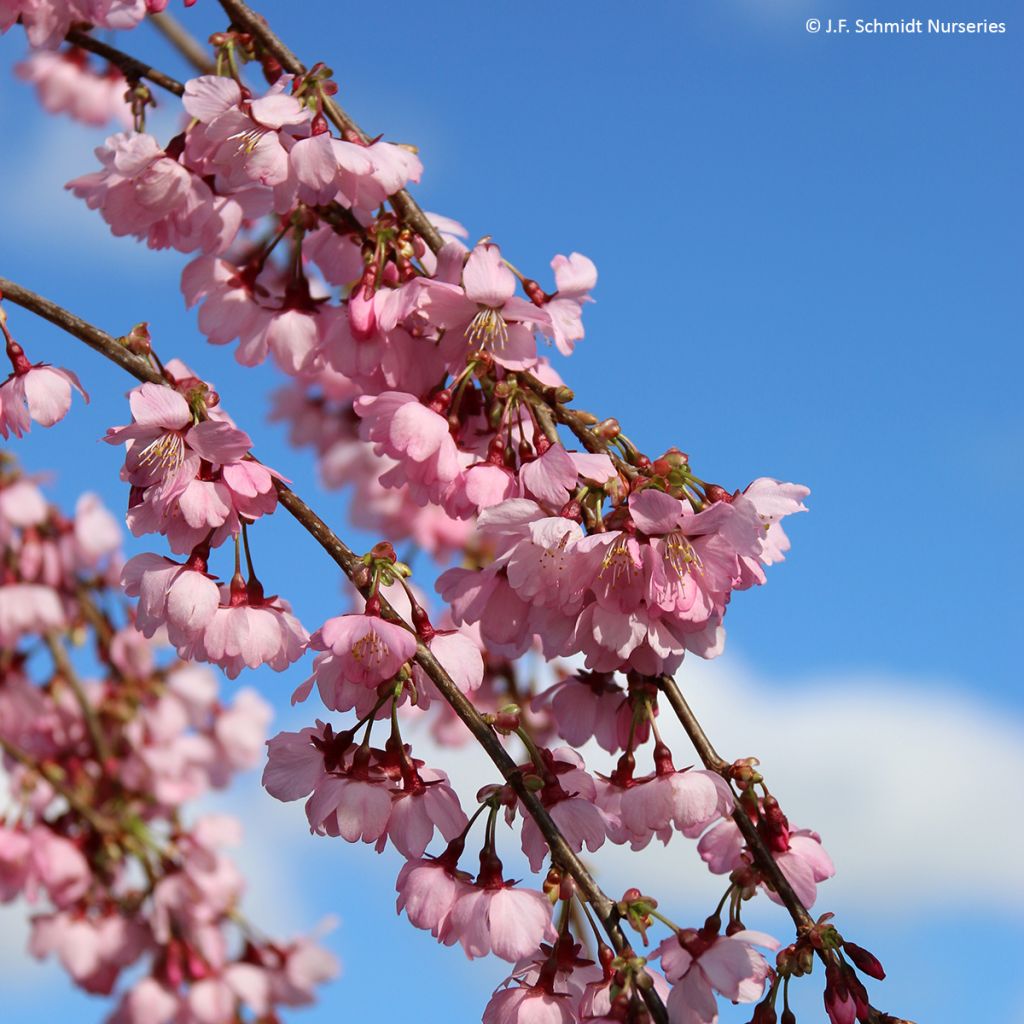

Prunus Pink Cascade - Cherry Tree
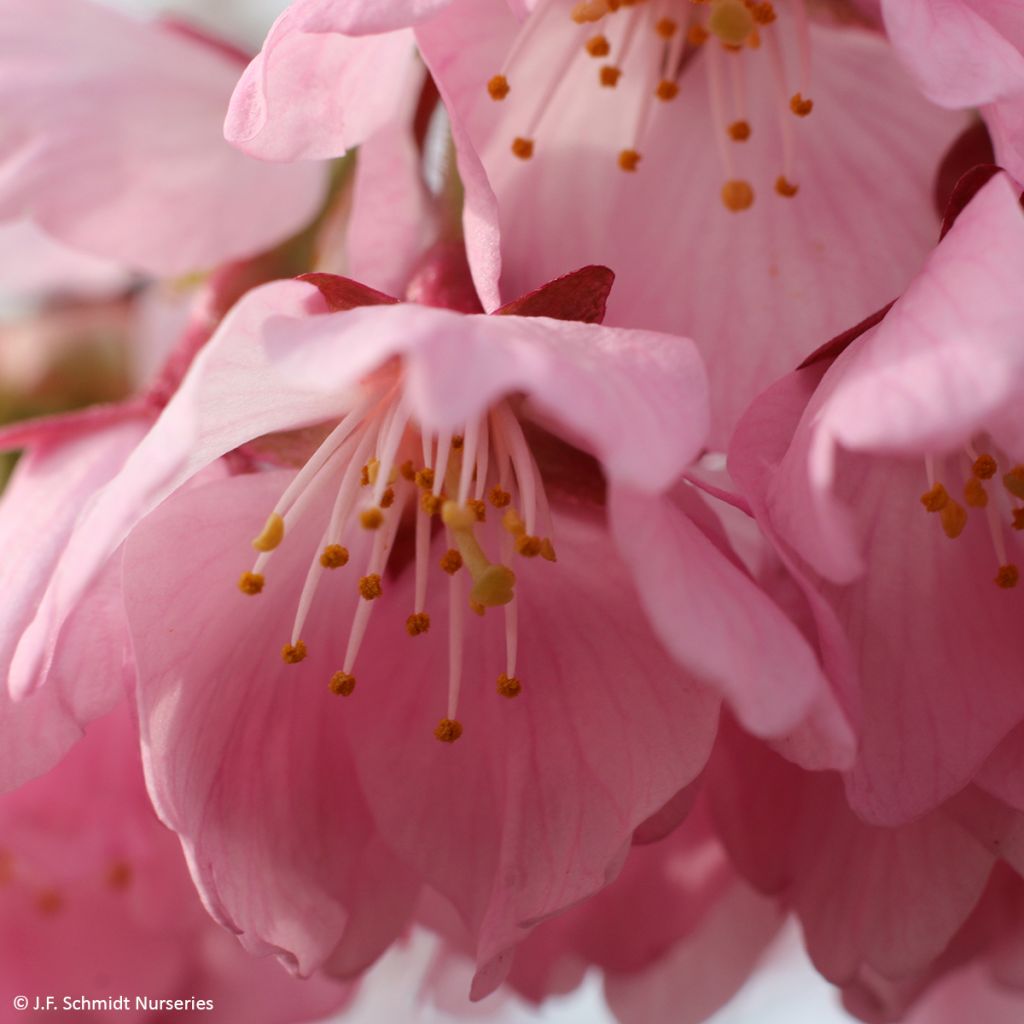

Prunus Pink Cascade - Cherry Tree
Prunus Pink Cascade - Wheeping Cherry Tree
Prunus PINK CASCADE ® 'NCPH1'
Wheeping Cherry Tree, Ornemental cherry tree, Flowering cherry tree
Why not try an alternative variety in stock?
View all →This plant carries a 24 months recovery warranty
More information
We guarantee the quality of our plants for a full growing cycle, and will replace at our expense any plant that fails to recover under normal climatic and planting conditions.
From €5.90 for pickup delivery and €6.90 for home delivery
Express home delivery from €8.90.
Delivery to Corse prohibited: UE law prohibits the import of this plant from mainland France to Corse as part of the fight against Xylella fastidiosa. Please accept our sincere apologies.
More information
Does this plant fit my garden?
Set up your Plantfit profile →
Description
Prunus Pink Cascade is a variety of Cherry tree notable for its exclusively weeping habit. Its flexible and trailing branches touch the ground, forming a perfectly shaped dome with a highly ornamental design, even in winter when the leaves have fallen. Early in the season, before the emergence of new leaves, this small tree is covered with a multitude of small, eye-catching, bright pink flowers, with a delicate fragrance. Its cascading green foliage creates a very aesthetic scene, which comes to life in autumn when the leaves turn yellow, orange, and red. This easy-to-grow, magnificent Flowering Cherry tree deserves to be planted as a specimen on a sunny lawn where it will thrive.
The Prunus genus includes more than 300 species, both fruit trees (apricot tree, peach tree...) and ornamental trees (Japanese Cherry tree, Cherry Laurel, Portuguese Laurel...), and belongs to the large family of Rosaceae. Prunus Pink Cascade is an American hybrid, resulting from a collaboration between the North Carolina State University on the east coast of the United States, and the J. Frank Schmidt and Son Nurseries, located on the other side of the country in Oregon on 1200 hectares! This variety was obtained by crossing two Prunus species, P. yedoensis native to Tibet, and P. incisa, native to the slopes of Mount Fuji in Japan.
This small tree has a naturally weeping growth habit, and if it were not grafted onto a trunk, it would likely form a ground-covering bush. The height of the graft determines the final size of the tree, which generally does not exceed 3.50 m in height with a spread of up to 4 m. Highly branched, it produces quite thin and flexible branches that barely rise upwards before pointing towards the ground. The branches thus form a true dome with a very interesting architectural appearance throughout the year. Early in spring, in March-April depending on the region, before the leaves appear, a profusion of small flowers cover the branches along their entire length, all the way to the ground. They are slightly fragrant and their bright pink colour brings joy to the garden. Grouped in 2 to 4-5 units, borne on long flower stalks, the small flowers, about three centimetres in diameter, delicately hang down, draping the entire plant in a pink floral coat. They are simple, composed of five petals and a central cluster of yellow-tipped stamens, they exude a romantic charm at the beginning of the season. They then develop into small ovoid fruits, initially red and then turning black.
The bright green foliage that emerges at the end of flowering accentuates the cascading effect of the tree, running along the branches that rush towards the ground. The unique growth habit of this Prunus is ornamental throughout the growing season, but even more so in autumn, when it adorns itself with its end-of-season colours. The leaves gradually turn yellow, orange, and red and coexist with a few leaves that remain green for a longer time, creating a delightful spectacle for about three weeks, or even longer depending on the year. They gradually fall to the ground as the cold sets in, revealing the tree's original architecture.
Planted as a specimen on a sunny lawn, Pink Cascade will fully showcase its ornamental qualities. You can also integrate it into a mixed border, making sure to give it some space so that it is not overshadowed by other plants that would hinder its weeping dome shape. Surround it with low-growing plants, such as ground-covering shrubs or perennials with later flowering, to enjoy flowers for a longer period. Potentilla fruticosa Creamissima is a shrubby Potentilla that forms a spreading cushion of 50 cm in height and 1 m in width, and its pale yellow flowers will take over from the Prunus from May onwards, continuing until September. A few clumps of Daylilies planted here and there will brighten up your border with vibrant colours, pink, red, orange, yellow, monochromatic or bicoloured throughout the summer. Perovskia atriplicifolia Lacey Blue, with its very compact habit, will offer a charming summer flowering in shades of blue-purple, carried by its greyish and finely-cut foliage, both ornamental and aromatic.
Report an error about the product description
Prunus Pink Cascade - Wheeping Cherry Tree in pictures
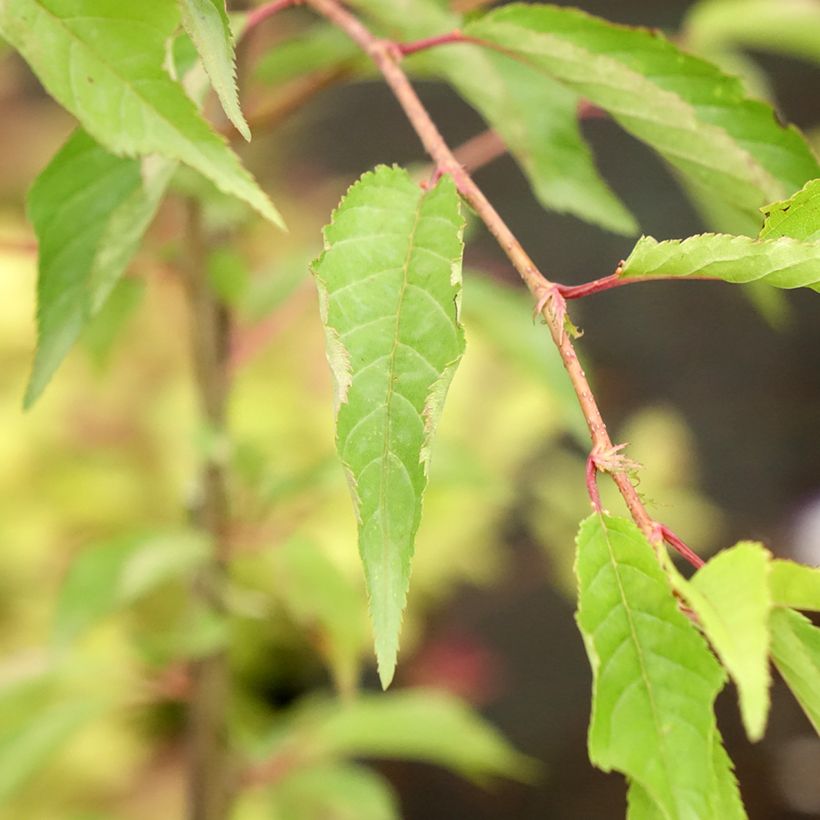

Plant habit
Flowering
Foliage
Botanical data
Prunus
PINK CASCADE ® 'NCPH1'
Rosaceae
Wheeping Cherry Tree, Ornemental cherry tree, Flowering cherry tree
Cultivar or hybrid
Other Prunus
Planting and care
Prunus Pink Cascade thrives in full sun in any fairly deep, rather rich, well-drained soil, slightly acidic to alkaline. It will thrive in most soils that are not excessively wet or excessively dry. It also tolerates partial shade, but will flower less well in such conditions. Water regularly to help it establish, especially during abnormally dry and hot weather. When planting, mix your soil with compost at a ratio of 50%. Dig a large planting hole. Apply a flowering shrub fertiliser every spring, with a higher concentration of potassium (K) than nitrogen (N). Be cautious of late frosts that could damage its early flowering. It is preferable to place the Prunus in a location that is somewhat sheltered from dry and cold winds.
Planting period
Intended location
Care
This item has not been reviewed yet - be the first to leave a review about it.
Spring-flowering shrubs
Haven't found what you were looking for?
Hardiness is the lowest winter temperature a plant can endure without suffering serious damage or even dying. However, hardiness is affected by location (a sheltered area, such as a patio), protection (winter cover) and soil type (hardiness is improved by well-drained soil).

Photo Sharing Terms & Conditions
In order to encourage gardeners to interact and share their experiences, Promesse de fleurs offers various media enabling content to be uploaded onto its Site - in particular via the ‘Photo sharing’ module.
The User agrees to refrain from:
- Posting any content that is illegal, prejudicial, insulting, racist, inciteful to hatred, revisionist, contrary to public decency, that infringes on privacy or on the privacy rights of third parties, in particular the publicity rights of persons and goods, intellectual property rights, or the right to privacy.
- Submitting content on behalf of a third party;
- Impersonate the identity of a third party and/or publish any personal information about a third party;
In general, the User undertakes to refrain from any unethical behaviour.
All Content (in particular text, comments, files, images, photos, videos, creative works, etc.), which may be subject to property or intellectual property rights, image or other private rights, shall remain the property of the User, subject to the limited rights granted by the terms of the licence granted by Promesse de fleurs as stated below. Users are at liberty to publish or not to publish such Content on the Site, notably via the ‘Photo Sharing’ facility, and accept that this Content shall be made public and freely accessible, notably on the Internet.
Users further acknowledge, undertake to have ,and guarantee that they hold all necessary rights and permissions to publish such material on the Site, in particular with regard to the legislation in force pertaining to any privacy, property, intellectual property, image, or contractual rights, or rights of any other nature. By publishing such Content on the Site, Users acknowledge accepting full liability as publishers of the Content within the meaning of the law, and grant Promesse de fleurs, free of charge, an inclusive, worldwide licence for the said Content for the entire duration of its publication, including all reproduction, representation, up/downloading, displaying, performing, transmission, and storage rights.
Users also grant permission for their name to be linked to the Content and accept that this link may not always be made available.
By engaging in posting material, Users consent to their Content becoming automatically accessible on the Internet, in particular on other sites and/or blogs and/or web pages of the Promesse de fleurs site, including in particular social pages and the Promesse de fleurs catalogue.
Users may secure the removal of entrusted content free of charge by issuing a simple request via our contact form.
The flowering period indicated on our website applies to countries and regions located in USDA zone 8 (France, the United Kingdom, Ireland, the Netherlands, etc.)
It will vary according to where you live:
- In zones 9 to 10 (Italy, Spain, Greece, etc.), flowering will occur about 2 to 4 weeks earlier.
- In zones 6 to 7 (Germany, Poland, Slovenia, and lower mountainous regions), flowering will be delayed by 2 to 3 weeks.
- In zone 5 (Central Europe, Scandinavia), blooming will be delayed by 3 to 5 weeks.
In temperate climates, pruning of spring-flowering shrubs (forsythia, spireas, etc.) should be done just after flowering.
Pruning of summer-flowering shrubs (Indian Lilac, Perovskia, etc.) can be done in winter or spring.
In cold regions as well as with frost-sensitive plants, avoid pruning too early when severe frosts may still occur.
The planting period indicated on our website applies to countries and regions located in USDA zone 8 (France, United Kingdom, Ireland, Netherlands).
It will vary according to where you live:
- In Mediterranean zones (Marseille, Madrid, Milan, etc.), autumn and winter are the best planting periods.
- In continental zones (Strasbourg, Munich, Vienna, etc.), delay planting by 2 to 3 weeks in spring and bring it forward by 2 to 4 weeks in autumn.
- In mountainous regions (the Alps, Pyrenees, Carpathians, etc.), it is best to plant in late spring (May-June) or late summer (August-September).
The harvesting period indicated on our website applies to countries and regions in USDA zone 8 (France, England, Ireland, the Netherlands).
In colder areas (Scandinavia, Poland, Austria...) fruit and vegetable harvests are likely to be delayed by 3-4 weeks.
In warmer areas (Italy, Spain, Greece, etc.), harvesting will probably take place earlier, depending on weather conditions.
The sowing periods indicated on our website apply to countries and regions within USDA Zone 8 (France, UK, Ireland, Netherlands).
In colder areas (Scandinavia, Poland, Austria...), delay any outdoor sowing by 3-4 weeks, or sow under glass.
In warmer climes (Italy, Spain, Greece, etc.), bring outdoor sowing forward by a few weeks.

































